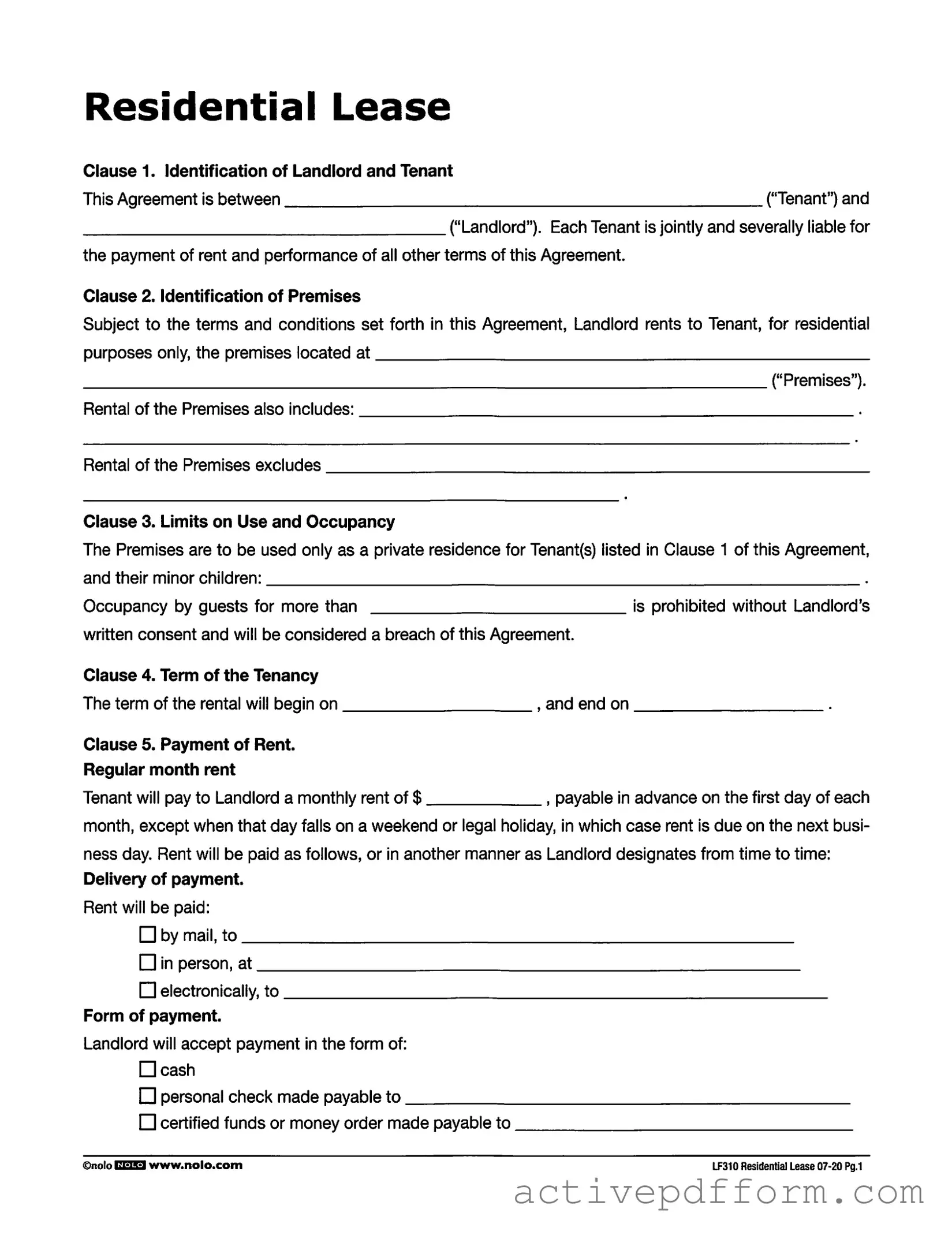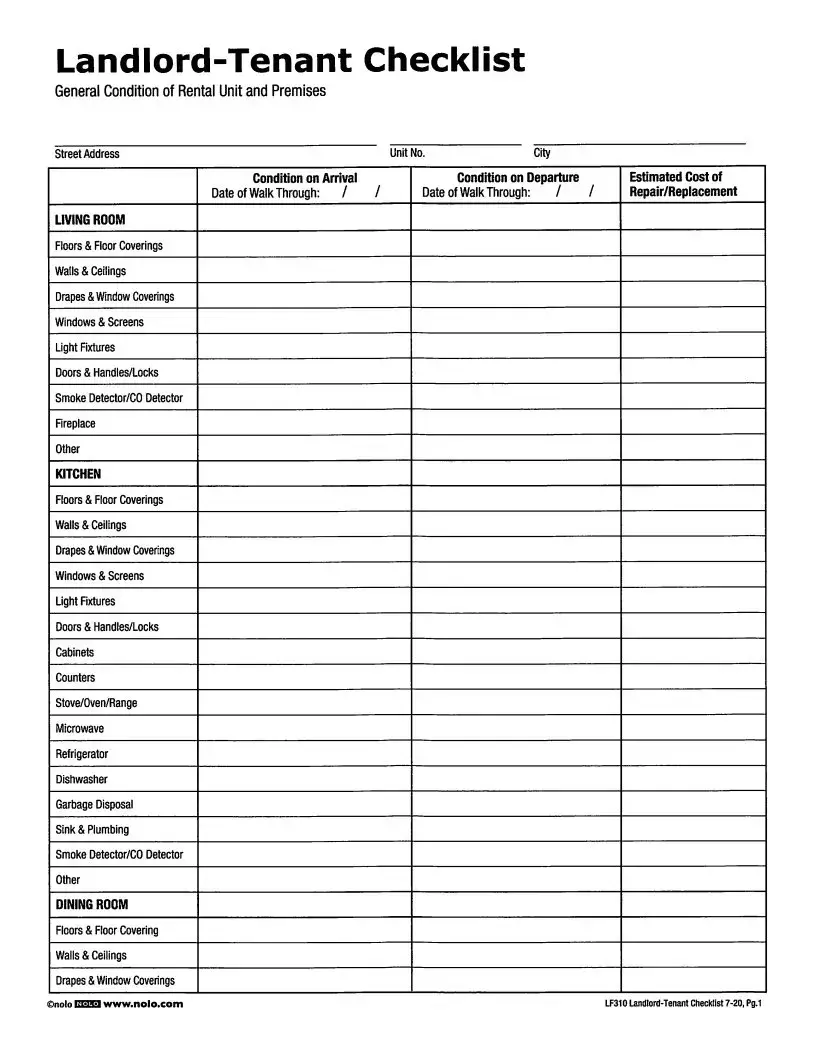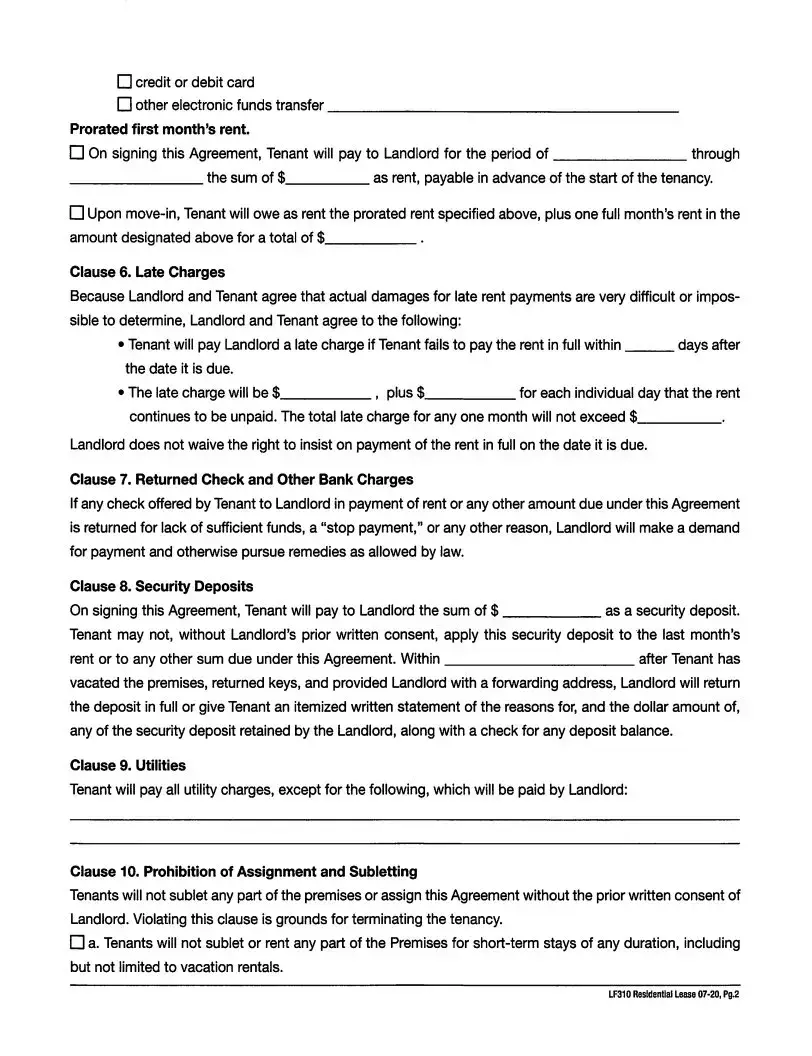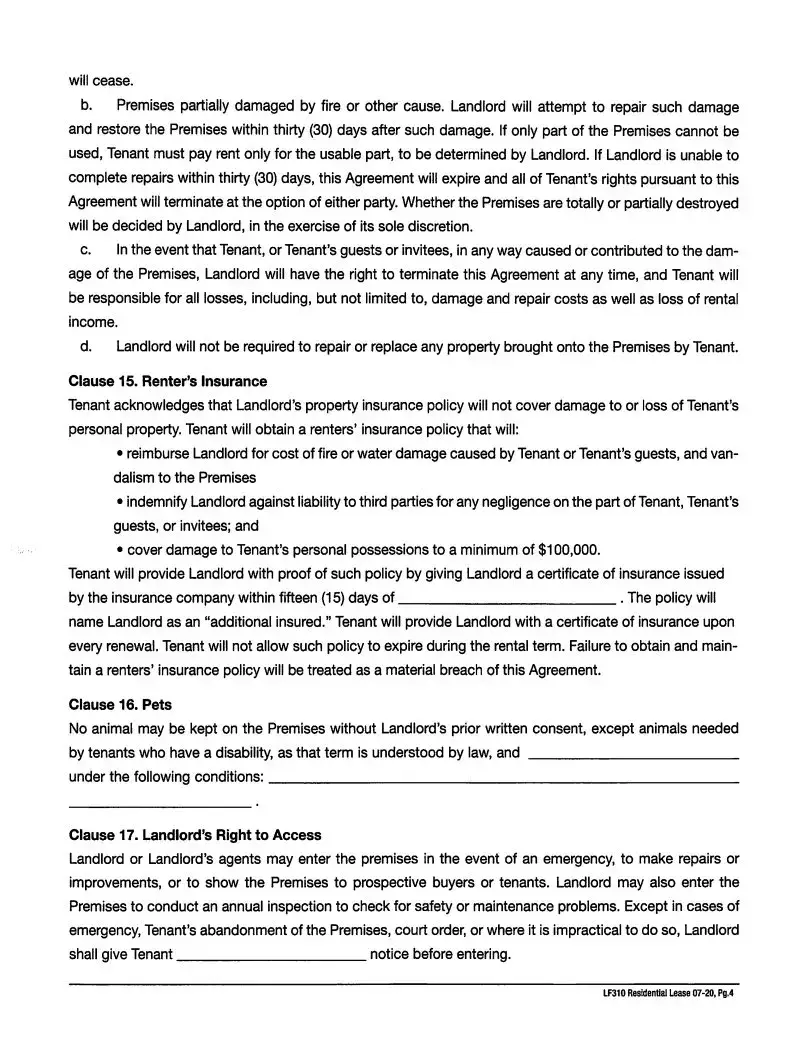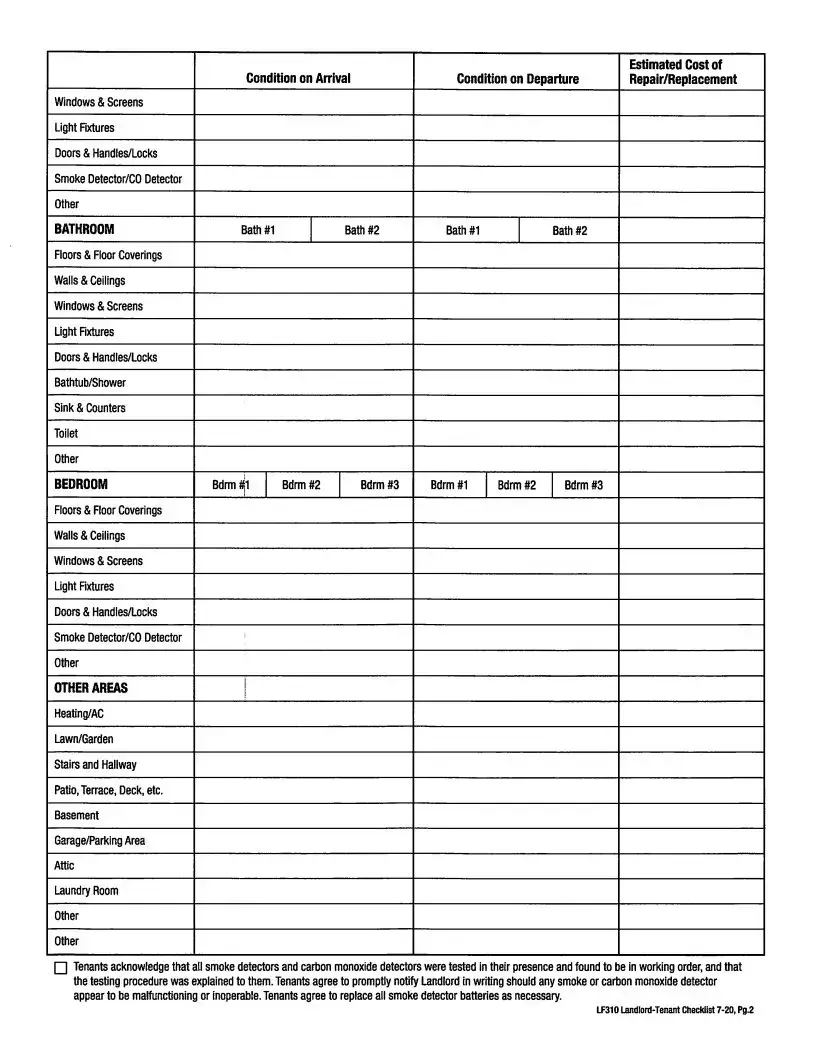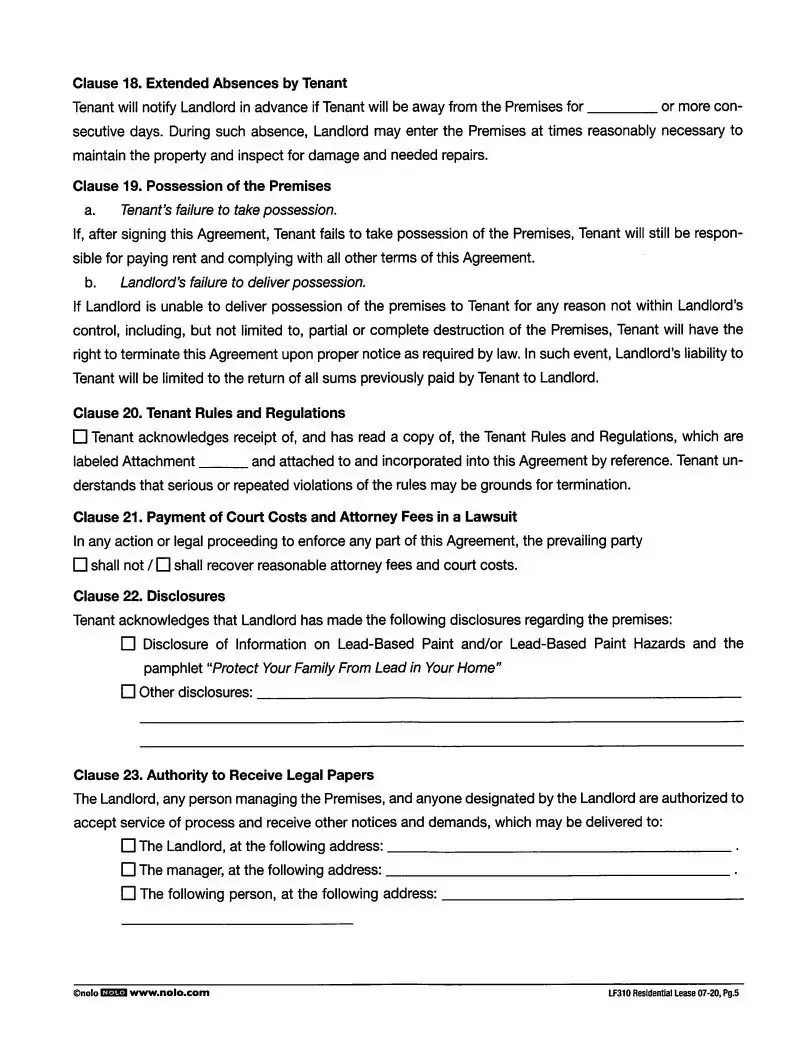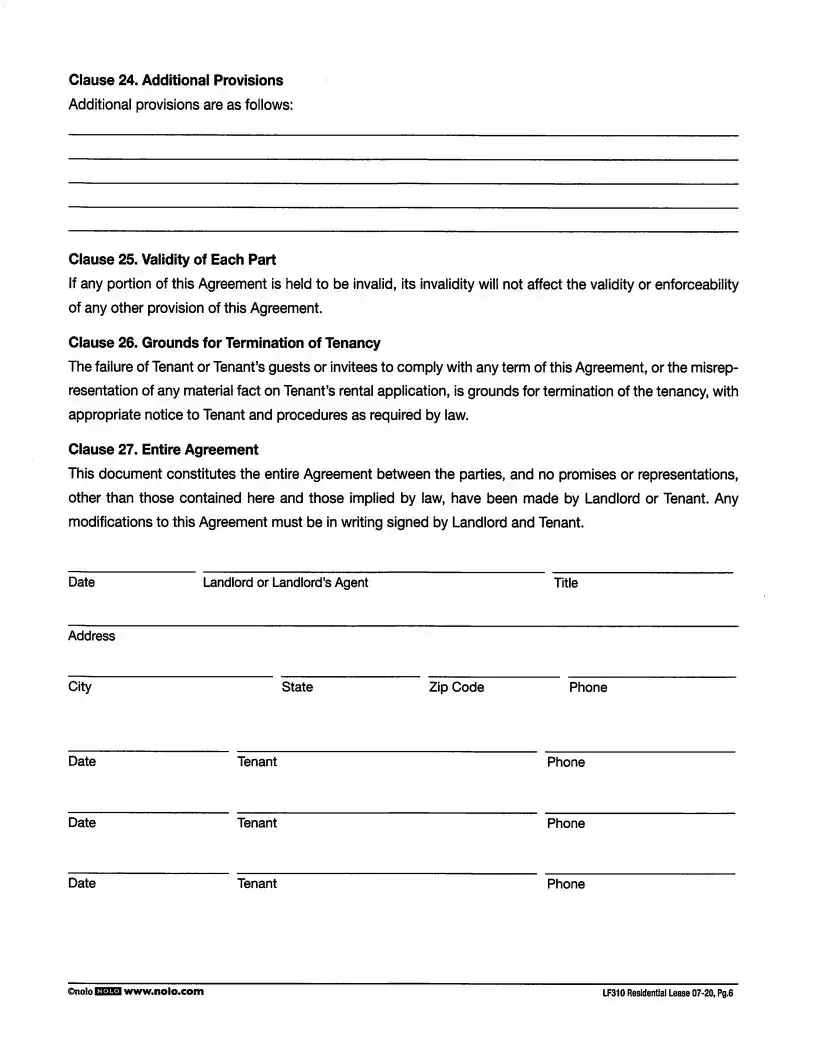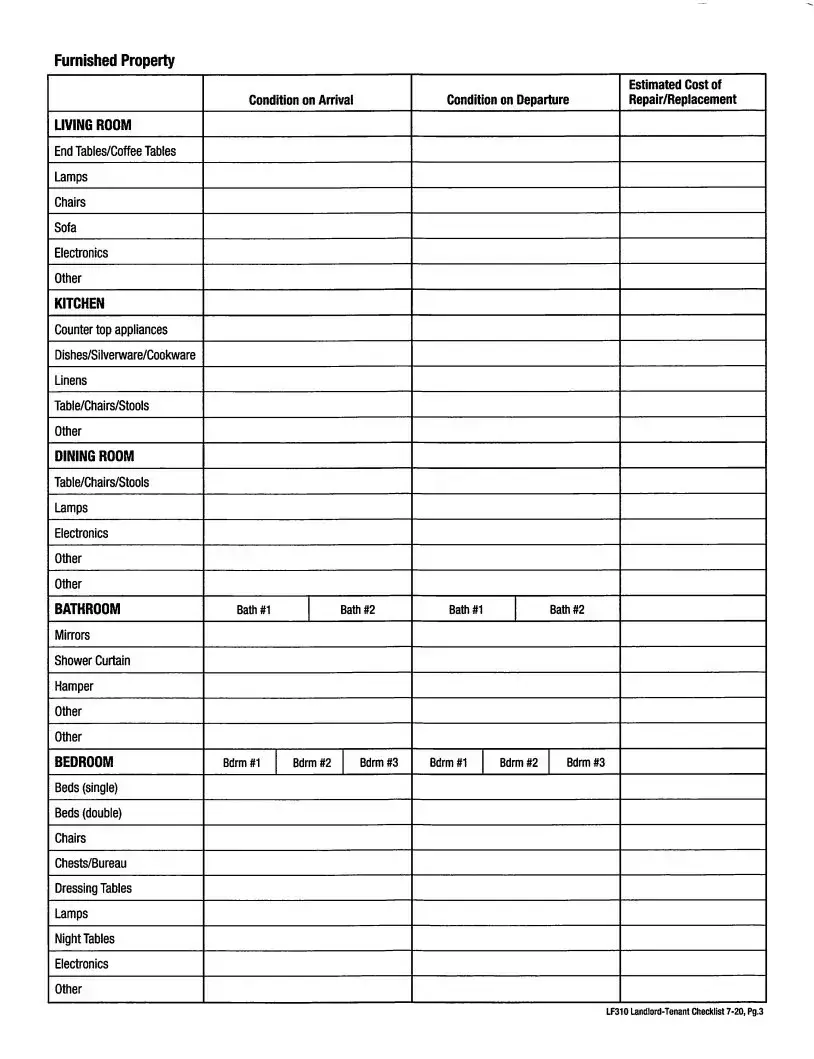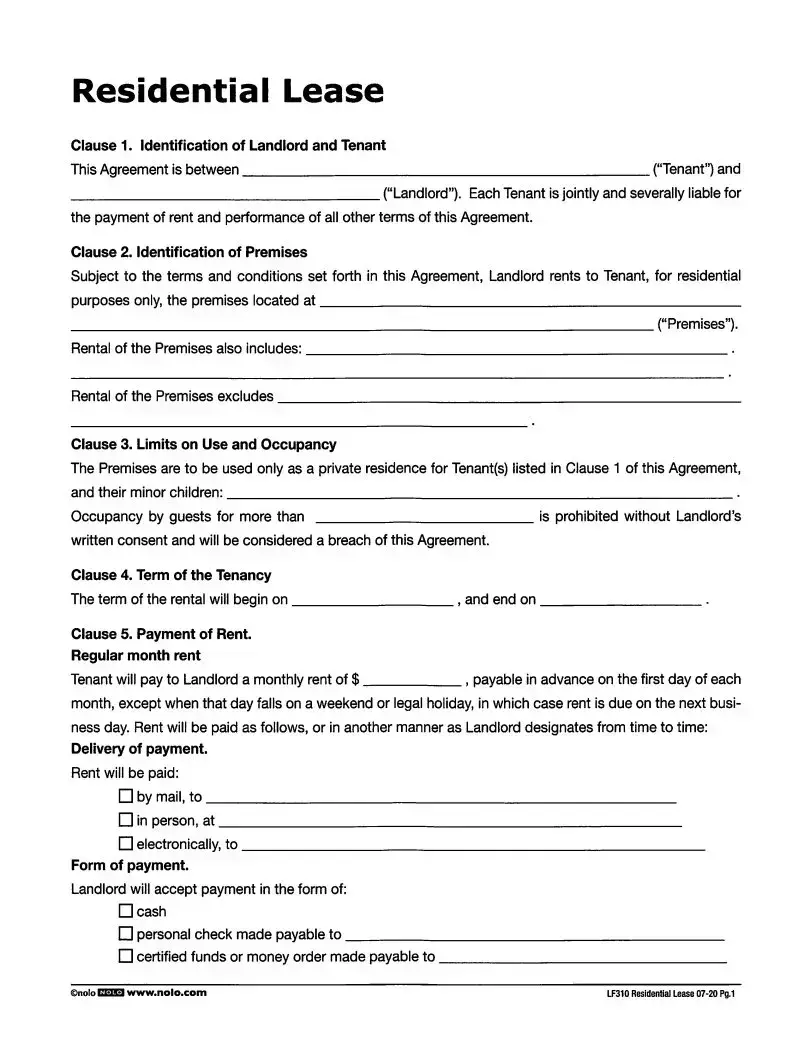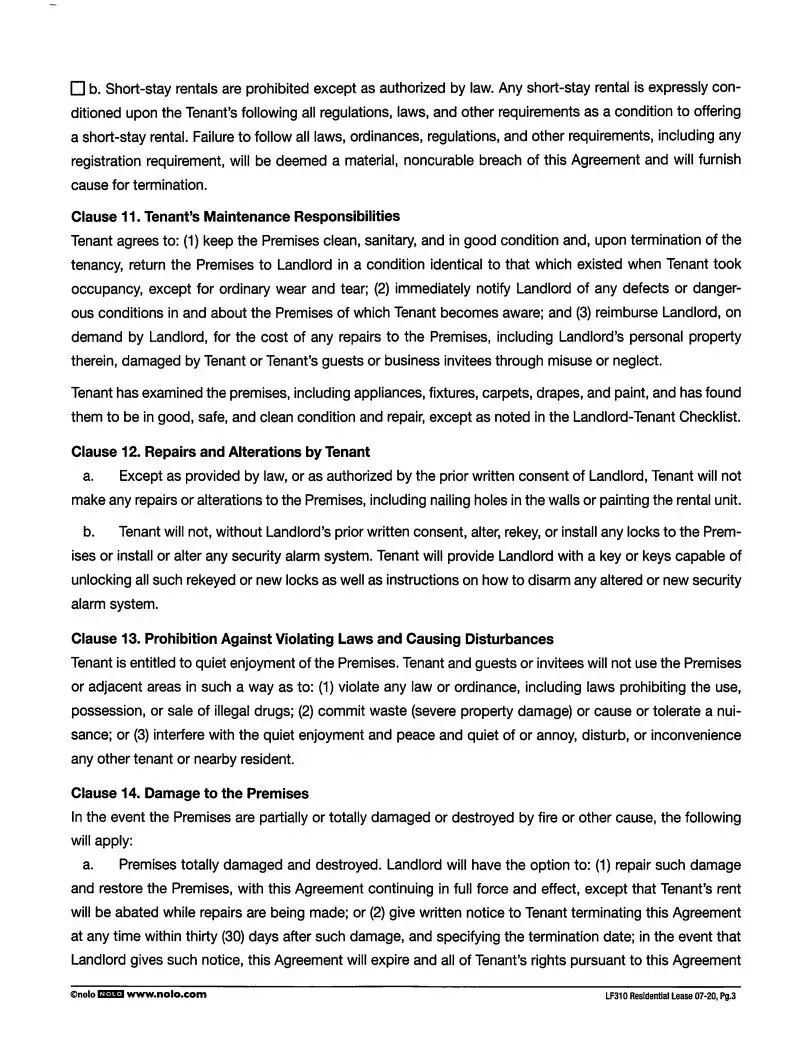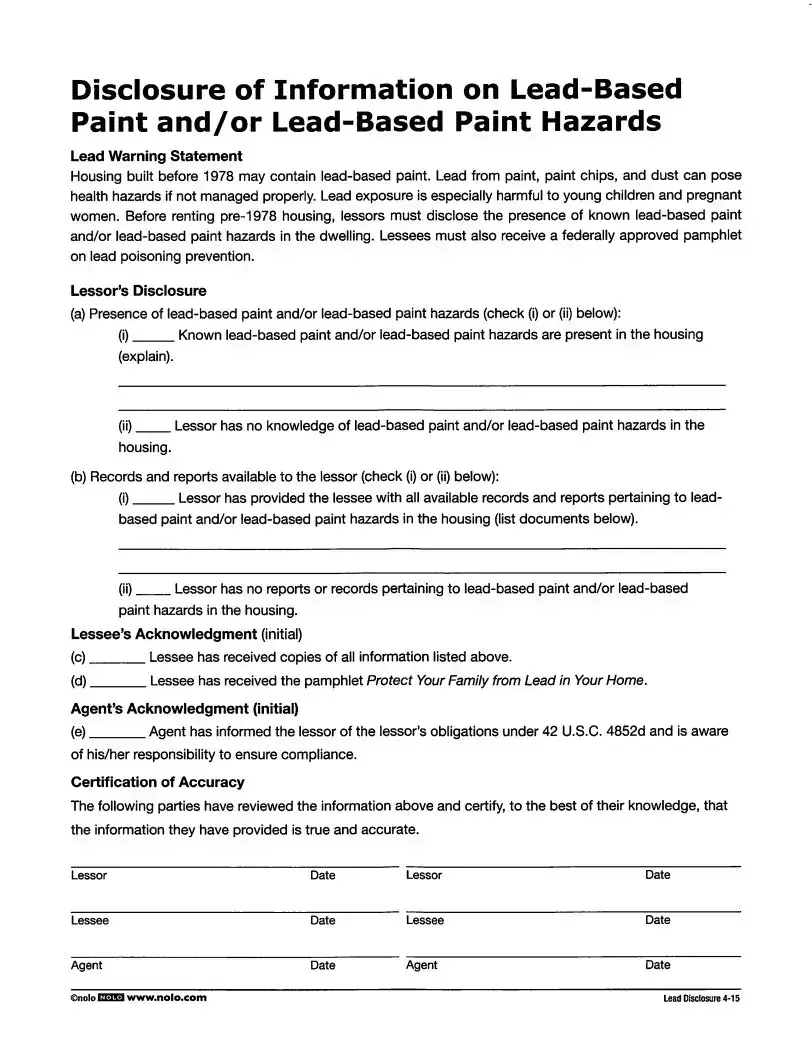When entering into a residential lease, understanding the terms and conditions laid out in the Lf310 Residential Lease form is crucial for both tenants and landlords. This comprehensive agreement begins with the identification of the parties involved, establishing a clear relationship between the tenant and the landlord. It specifies the premises being rented, ensuring that both parties are aware of the property in question. The lease also outlines important restrictions on use and occupancy, emphasizing that the premises are intended solely for residential purposes and detailing the consequences of unauthorized guests. Furthermore, the lease sets the term of tenancy, clearly stating when the rental period begins and ends. Payment of rent is addressed in detail, including the amount due, the timing of payments, and acceptable methods of payment. Late charges and returned check policies are also included to protect the landlord’s interests while ensuring tenants are aware of their obligations. Security deposits are discussed, providing clarity on the conditions under which these funds may be withheld. Lastly, the lease prohibits subletting or assignment without prior consent, reinforcing the landlord's control over who occupies the property. Each of these elements plays a vital role in creating a fair and enforceable rental agreement, ultimately fostering a positive landlord-tenant relationship.
